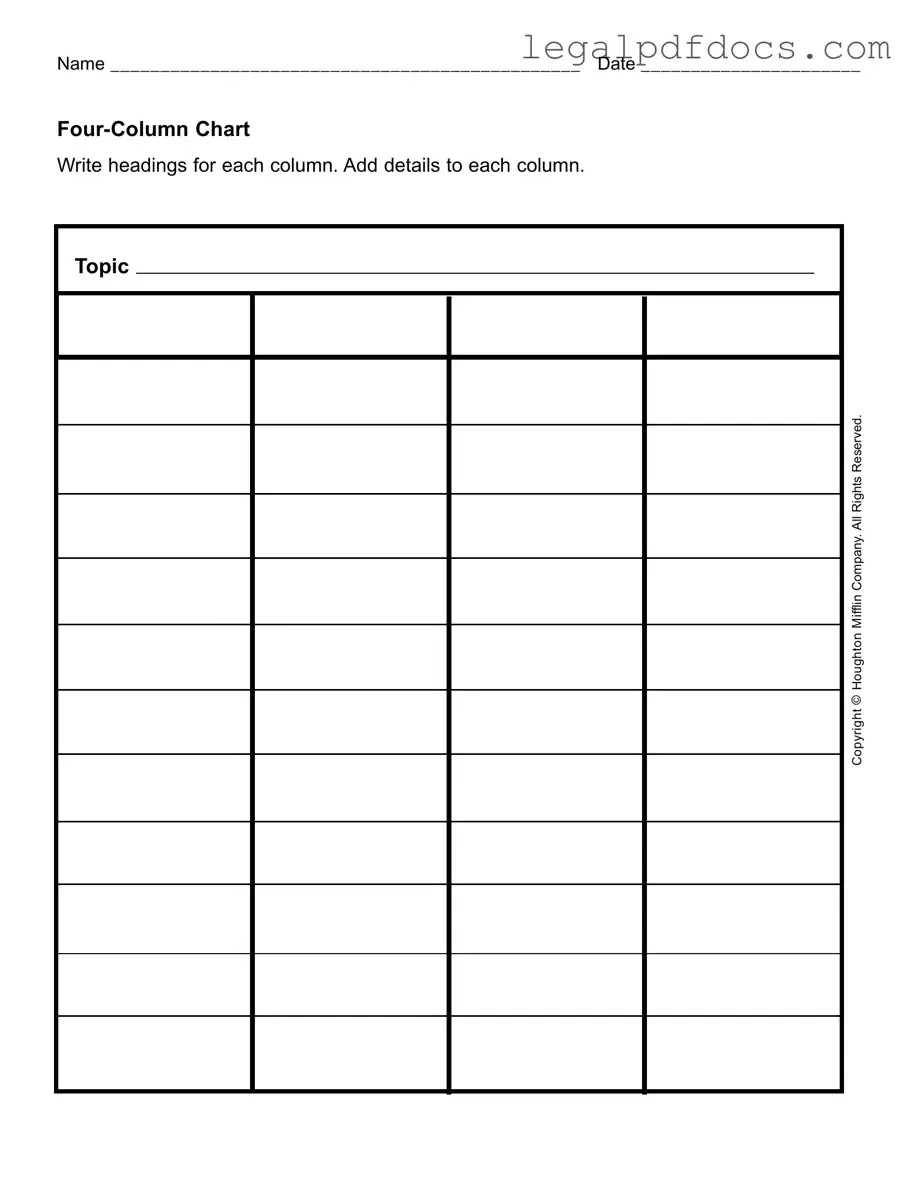Fill Out a Valid Four Column Chart Template
The Four Column Chart form is a structured tool designed to help individuals organize information systematically across four distinct categories. Users can fill in their names and dates while creating headings for each column, allowing for a clear presentation of details related to a specific topic, such as the Mifflin Company. To get started on your own Four Column Chart, please fill out the form by clicking the button below.
Open Four Column Chart Editor Here
